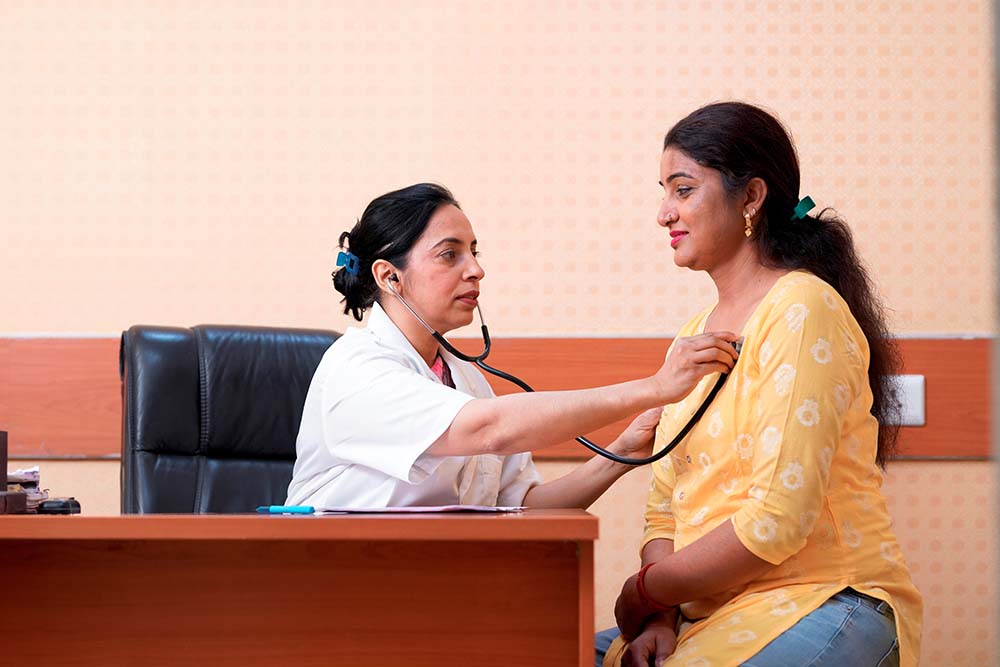Women in particular need to keep an eye on their physical and mental health, because if we are scurrying to and fro appointments and errands, we don’t have a lot of time to take care of ourselves,” said Michelle Obama, former First Lady of the United States of America. “We need to do a better job of putting ourselves higher on our own ‘to do’ list.”
Studies around the world indicate that women live longer than men globally. However, the quality of life and health of women is often less than satisfactory, thanks to discriminatory behaviours that govern their access to medical treatment and healthcare. A recent article in the Economic Times stated that women face higher healthcare costs than men. Adult women in the age range of 18 – 44 have almost double the healthcare costs of men. This leaves them vulnerable if they do not have adequate earnings, savings, or insurance to fall back on, especially with medical inflation costs on the rise. Additionally, the WHO revealed that India has the highest out-of-pocket healthcare expenditure in the world, with almost 71 per cent of households having to borrow or deplete assets to pay for medical treatment.
“Women’s healthcare costs tend to be greater than that of men, due to instances such as childbirth, post-natal care, menstrual needs, hormonal changes, and so on,” says insurance agent, Swati Raheja. “Through their reproductive years right up until menopause, these needs are sometimes put on the back burner due to the lack of economic security. This problem is further coupled with the fact that women have lower incomes than men, and a lot of them have no income at all. They participate mainly in unpaid labour at home and look to other family members for financial support. And so, to ensure economic security, some of these healthcare needs and costs are often overlooked in favour of something else.”
Get Medical Insurance
This small investment can reap rewards in the long term. Medical or healthcare insurance usually covers most common ailments, but reading the fine print before deciding on the policy is always wise. “Always check the coverage of the policy before you purchase one,” says Raheja. “A lot of insurance companies these days have women’s health insurance plans that safeguard against a range of medical expenses that range from childbirth to breast cancer. Choose one that offers wider coverage so that you won’t have to run around to arrange funds just because of a mere technicality. Understand the pre and post-hospitalisation costs involved, what kind of annual health check-ups are included, and even maternity coverage. The great thing about medical insurance is that you can also claim tax exemption against the premiums paid if you’re a woman, so it’s a great investment. The earlier you get a policy, the better the terms are likely to be. Also, check the list of hospitals that are included in the plan. Are you comfortable with any of them? What about proximity? Do you consult with anyone there already? If you have the time to research, check the claim settlement ratio and ease of the process of the insurance provider as well and go with a reputed one.”
The National Family Health Survey India Report 2021 revealed that 41 per cent of households in the country had at least one member covered under health insurance. Of these, 30 per cent of women aged 15-49 and 33 per cent of men aged 15-49 were covered by health insurance or financing schemes. Almost 3-6 per cent of women and 4-7 per cent of men were covered by the Employee State Insurance Scheme (ESIS) or the Central Government Health Scheme (CGHS).

Set Up An Account For Health Savings
Although this is not necessarily the rule of thumb, as you grow older, your healthcare needs increase. Unfortunately older, retired women are as susceptible to a lack of affordable healthcare as those in the reproductive age range. Start building a nest egg for healthcare as early as you can. Maybe you’ll need it, maybe you won’t. Why take a chance? Reduce your debt and start saving at least 20 per cent to 30 per cent of your salary each month into a savings plan. You can reduce this percentage once your earnings increase. Don’t apply to any chequebooks or cards attached to this account – it helps to keep temptation out of the way!
Prevention Is Better Than Cure
In most cases, pre-emption and early detection of any disease can bring down healthcare costs significantly. “Get your master health check-up done every two years and after 40, every year,” says Dr Ranjit Nair, general practitioner. “If you can cough up extra, don’t forget things that aren’t covered in the regular package, such as a colonoscopy. Dental expenses also count as medical expenses. Get an annual teeth cleaning procedure and nip any decay problems in the bud right at the onset. Women are especially prone to tooth decay because of hormonal changes that occur within the body. This will save you the bother and expense of a root canal later! These costs may seem like an unnecessary burden but set money aside and consider them a better investment than a new handbag or a meal out. Evaluate your family history and check what you’re likely to inherit genetically – whether it is diabetes or cancer. Consult your healthcare practitioner and adopt a diet and fitness regimen that is sustainable and healthy.”
The best way to pre-empt medical expenses is by staying healthy. Unfortunately, equitable health may not be an option for all women. Medical insurance, savings plans, and small steps to take better care at the preventive stage can make these expenses lesser of a burden to bear, and help women optimise their health and quality of life.